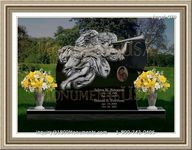|
Details You Should Notice When Drafting An Epitaph
When making final arrangements for someone who has passed away, there are a lot of details that require attention. These duties generally fall to family members of the deceased and may be handled by a single person, or the responsibilities may be distributed to make it easier. One such task is writing an appropriate epitaph for the gravestone.
This means that they will create a short sentiment, statement, poem, verse or phrase that will be engraved on the headstone as a lasting testament. The purpose is to give others a brief glance into the individual it represents. These inscriptions take many forms, usually depending on the personality and what the individual's life was like or the emotional state of the writer.
Nearly every grave marker starts out with the same basic identifying information. They state with the deceased's name and the date of their birth followed by when they passed away. Some people choose to stop there, but many opt to include additional statements, sentiments or facts that either describe the individual, or speak to their life or personality.
These additional statements are quite often short sentiments about how much the individual will be missed, how special they were or wishes for a peaceful afterlife. They might list their familial positions such as child, sibling, parent or spouse, or it may be a record of their time in the military or other organization. Spiritual scripture is also very commonly used.
A growing number of people are making the choice to write their own goodbyes. By doing so they are able to express themselves more accurately and use a bit of creativity if desired. People with an elevated sense of humor find this to be the perfect opportunity to leave people smiling one last time.
Another approach many people take when composing their inscription is to leave a final bit of advice to those who read their marker. They may warn against taking life for granted or suggest that the living make the most of every moment. There are no limitations as to what one might choose to place on their stone.
|
|



























